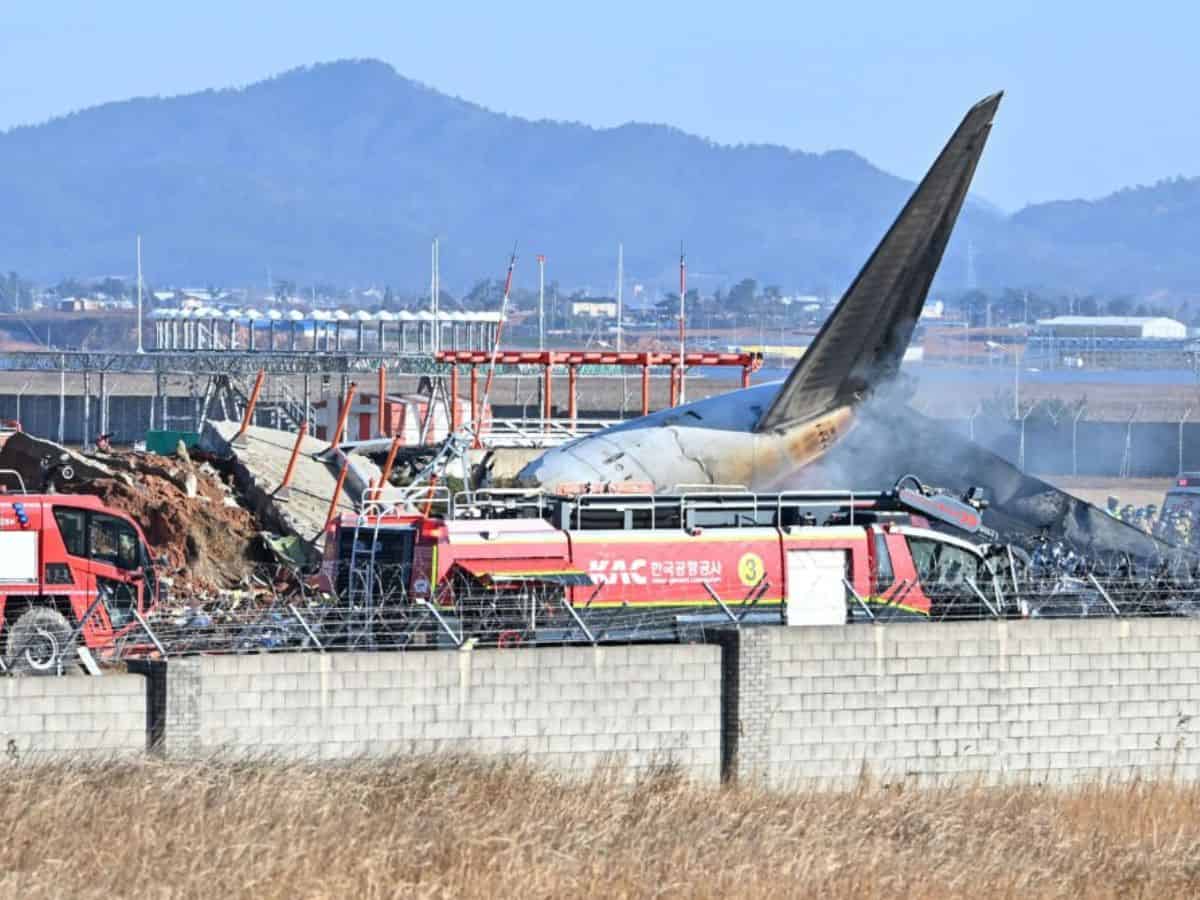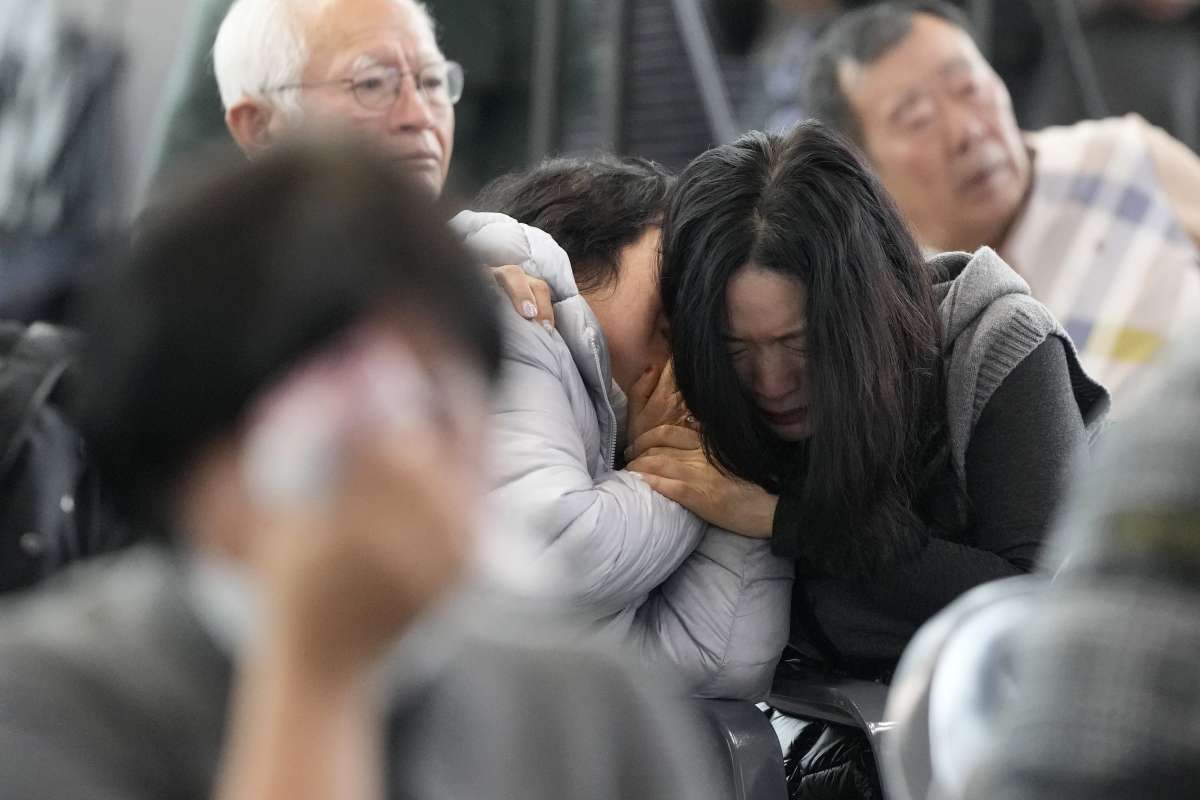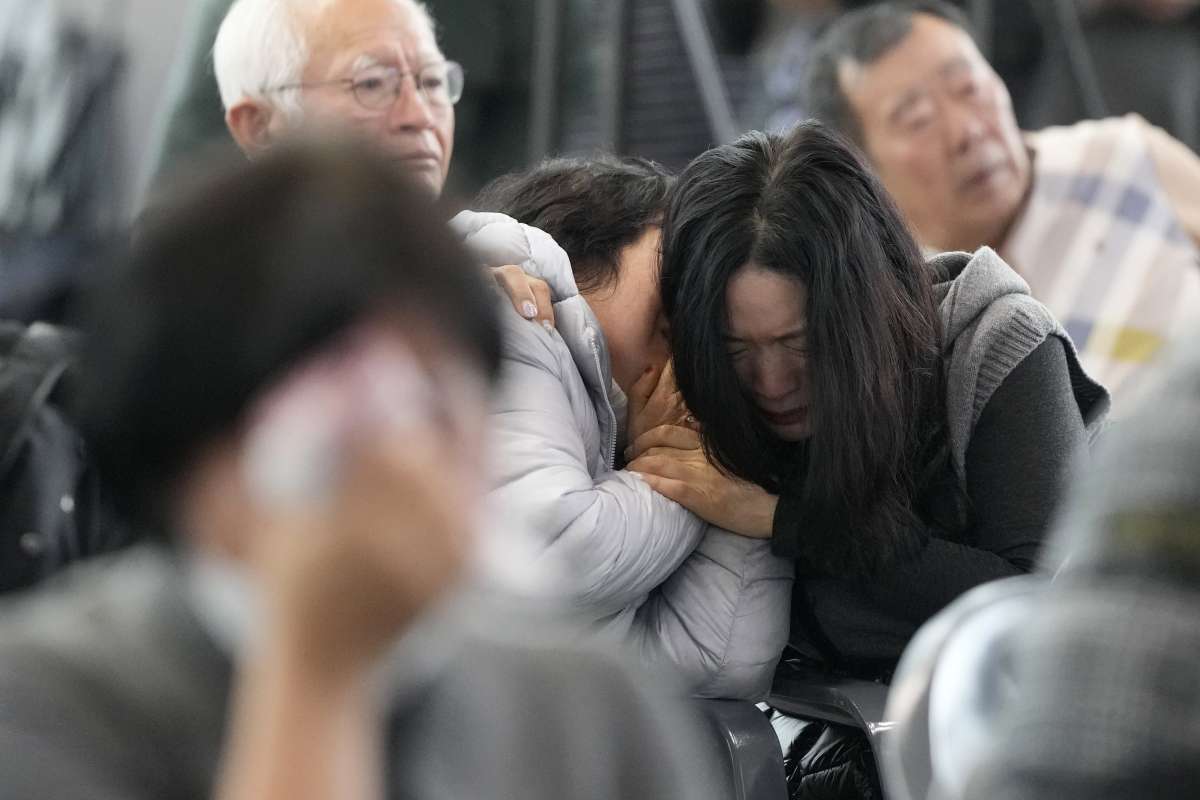South Korea plane, a term encompassing the nation’s vibrant aviation industry, deserves a closer look. From its historical development and safety regulations to its economic impact and future prospects, South Korea’s aviation sector offers a fascinating case study in global air travel. We’ll explore the major airlines, delve into safety standards, examine the manufacturing sector, and consider the industry’s contribution to the South Korean economy, all while looking ahead to future innovations and challenges.
This exploration will cover the evolution of South Korean airlines, highlighting key moments and technological advancements. We’ll also analyze the regulatory framework ensuring passenger safety and the economic contributions of this vital industry. Finally, we’ll peer into the future, considering potential growth areas and challenges facing the sector.
Thinking about South Korea’s air travel? It’s generally safe, but like anywhere, accidents can happen. To get a better understanding of the historical context, check out this resource on plane crashes south korea to see the statistics and learn more about safety measures. This knowledge helps you appreciate the efforts made to ensure safe flights on South Korean planes.
South Korean Airlines: A Historical Overview
South Korea’s aviation industry boasts a rich history, marked by significant growth and adaptation to global changes. This section details the evolution of major South Korean airlines, their business models, and how they’ve navigated major historical events.
Timeline of Major South Korean Airlines
Korean Air and Asiana Airlines are the two dominant players, each with a distinct history. Korean Air, established in 1962, initially focused on domestic routes before expanding internationally. Asiana Airlines, founded in 1988, quickly gained a significant market share, known for its modern fleet and service. Both airlines have faced challenges, including economic downturns and global crises, but have consistently adapted and expanded their operations.
- 1962: Korean Air founded.
- 1988: Asiana Airlines founded.
- 1990s-2000s: Rapid expansion for both airlines, marked by increased international routes and fleet modernization.
- 2008: Global financial crisis impacted both airlines, leading to restructuring and cost-cutting measures.
- 2010s-Present: Continued growth, focus on low-cost carriers (LCCs), and expansion into Asian markets.
Evolution of Aircraft Used by South Korean Airlines
The aircraft utilized by South Korean airlines have mirrored technological advancements in the aviation industry. Early fleets consisted of propeller-driven aircraft, gradually transitioning to jetliners as technology advanced. Today, both Korean Air and Asiana Airlines operate a diverse range of modern, fuel-efficient aircraft, including Boeing and Airbus models.
- Early Years: Douglas DC-3, Convair 240
- Jet Age: Boeing 707, Boeing 727, McDonnell Douglas DC-10
- Modern Era: Boeing 747, Boeing 777, Airbus A380, Airbus A350
Comparison of Business Models
Korean Air and Asiana Airlines, while both full-service carriers, employ slightly different business models. Korean Air has a more extensive global network, while Asiana Airlines has focused on a more refined passenger experience. The rise of low-cost carriers (LCCs) in South Korea has also influenced their strategies, leading to increased competition and adjustments to pricing and services.
Impact of Global Events on South Korean Aviation
The Korean War significantly impacted the early development of South Korean aviation, hindering growth. Subsequent economic booms fueled expansion, while global events like the Asian financial crisis and the COVID-19 pandemic presented significant challenges, requiring adaptation and government support.
Safety and Regulation in South Korean Aviation
South Korea maintains a rigorous aviation safety framework, resulting in a strong safety record. This section details the regulatory environment, safety improvements, and the role of international organizations.
Ever wondered about the different types of planes flying in and out of South Korea? Well, understanding their aviation industry requires knowing more about the country itself. For a deeper dive into the overall landscape, check out this informative site on south korea , which will give you great context. Then, you can better appreciate the role these planes play in South Korea’s economy and global connections.
Safety Records of Major South Korean Airlines
The following table compares the safety records of major South Korean airlines. Note that accident rates are complex and influenced by many factors, including years of operation and fleet size. This data represents a general overview and should be considered alongside other safety metrics.
| Airline Name | Accident Rate (per million departures – approximate) | Safety Certifications | Years of Operation |
|---|---|---|---|
| Korean Air | (Data varies across sources, requires detailed research for accurate figure) | IATA Operational Safety Audit (IOSA), other relevant certifications | Since 1962 |
| Asiana Airlines | (Data varies across sources, requires detailed research for accurate figure) | IATA Operational Safety Audit (IOSA), other relevant certifications | Since 1988 |
South Korea’s Aviation Regulatory Framework
The Ministry of Land, Infrastructure, and Transport (MOLIT) oversees South Korea’s aviation regulations. This includes airworthiness standards, pilot licensing, air traffic control, and airport operations. Strict enforcement mechanisms ensure compliance with international standards.
Key Safety Improvements
South Korean airlines have implemented numerous safety improvements in recent years, including advanced flight simulators for pilot training, enhanced maintenance procedures, and the adoption of new technologies to improve flight safety.
Role of International Aviation Organizations
International organizations like the International Civil Aviation Organization (ICAO) significantly influence South Korean aviation safety standards. ICAO sets global standards, and South Korea actively participates in these initiatives, ensuring alignment with international best practices.
So you’re looking into South Korean planes? That’s cool! Thinking about their tech, it’s interesting to compare it to other advanced military tech, like the unmanned systems. For example, the capabilities of a South Korean plane might be compared to the sophisticated targeting and navigation systems used in something like a ukrainian sea drone , showcasing different approaches to similar problems.
Ultimately, understanding both helps you grasp the wider picture of modern military technology and its applications.
South Korean Aircraft Manufacturing and Exports
While not a major aircraft manufacturer on the scale of Boeing or Airbus, South Korea is actively involved in aircraft manufacturing and related technologies. This section explores the nation’s contributions to the global aviation industry.
Companies Involved in Aircraft Manufacturing
Several South Korean companies contribute to the global aerospace industry. These include companies specializing in components, systems, and maintenance, rather than complete aircraft manufacturing. Further research is needed to provide a comprehensive list.
- Korea Aerospace Industries (KAI)
-primary player in aircraft manufacturing and related technologies.
Export Strategies
South Korean aircraft manufacturers focus on niche markets and strategic partnerships to expand their export reach. This often involves collaboration with international companies to leverage expertise and access wider markets.
Technological Advancements
South Korean companies are making strides in various aerospace technologies, including advanced materials, avionics, and propulsion systems. While not yet leading in complete aircraft manufacturing, their contributions are significant.
Comparison with Other Aviation Nations
Compared to major aviation nations like the US and Europe, South Korea’s aircraft manufacturing and export volume is smaller. However, the nation is steadily growing its presence in specific niche markets and technologies.
Impact of South Korean Aviation on the Economy
South Korea’s aviation sector significantly contributes to the national economy. This section highlights its economic impact across various aspects.
Contribution to GDP
The aviation sector, including airlines, airports, and related industries, contributes a measurable percentage to South Korea’s GDP. Precise figures require detailed economic data analysis.
Employment Generation
The aviation industry provides numerous jobs, directly and indirectly, encompassing pilots, engineers, maintenance personnel, ground staff, and related support services.
Infrastructure Investments
Significant infrastructure investments support South Korea’s aviation sector, including airport expansions, air traffic control modernization, and related infrastructure projects.
Economic Benefits of Tourism

South Korean airlines play a crucial role in facilitating tourism, bringing in significant revenue and supporting related industries like hospitality and retail.
Future Trends in South Korean Aviation
The future of South Korean aviation is marked by opportunities and challenges. This section explores predicted growth, emerging technologies, and potential hurdles.
Future Growth Predictions
Continued growth is expected in the South Korean aviation industry, driven by increasing passenger demand, both domestically and internationally. However, this growth will depend on factors such as economic stability and global events.
Emerging Technologies
Emerging technologies like electric aircraft and autonomous flight systems will likely impact South Korean aviation in the coming decades. The adoption of these technologies will depend on factors like technological maturity and regulatory frameworks.
Potential Challenges
The South Korean aviation industry faces challenges including environmental concerns related to carbon emissions, increased competition from other Asian airlines, and potential economic fluctuations.
Future Scenario in 2050, South korea plane

By 2050, South Korea might see a significant increase in sustainable aviation practices, with a mix of electric and hybrid aircraft alongside traditional jetliners. Increased automation and technological advancements could streamline operations and enhance efficiency. However, strong competition and environmental regulations will remain key factors shaping the industry.
Illustrative Example: The Boeing 737-800
The Boeing 737-800 is a widely used narrow-body aircraft model commonly operated by South Korean airlines. Its design, capabilities, and operational history illustrate the characteristics of modern air travel in South Korea.
Design, Capabilities, and Operational History
The Boeing 737-800 is a twin-engine, narrow-body jetliner known for its fuel efficiency and reliability. Its sleek design, characterized by its twin engines mounted under the wings and a distinctive fuselage shape, is easily recognizable. It’s highly versatile, capable of operating on both short and medium-haul routes, making it a popular choice for airlines worldwide. Its operational history shows a long track record of safe and efficient service.
Manufacturing Process

The manufacturing process involves a complex assembly line, with various components produced by different suppliers globally. Boeing integrates these components into the final aircraft, undergoing rigorous testing and quality control procedures before delivery to airlines.
Role in the South Korean Aviation Industry
The Boeing 737-800 plays a significant role in the South Korean aviation industry, forming a substantial part of the fleets of major airlines. It supports domestic and regional connectivity, facilitating both passenger and cargo transport.
Final Thoughts
South Korea’s aviation industry has come a long way, evolving from its early days to become a significant player on the global stage. By understanding its history, safety standards, economic impact, and future trajectory, we gain a valuable insight into a dynamic sector vital to the nation’s prosperity. The industry’s continued growth and innovation promise exciting developments in the years to come, solidifying South Korea’s position in international aviation.
Detailed FAQs: South Korea Plane
What is the busiest airport in South Korea?
Incheon International Airport (ICN) is the busiest airport in South Korea.
Which South Korean airlines offer international flights?
Korean Air and Asiana Airlines are the major South Korean airlines offering extensive international flight networks.
How does South Korea regulate drone usage?
South Korea has specific regulations for drone operation, focusing on safety and airspace management. These rules often involve registration and licensing depending on the drone’s size and intended use.
What are the main aircraft manufacturers in South Korea?
While South Korea doesn’t have large-scale aircraft manufacturers like Boeing or Airbus, it has companies involved in parts manufacturing and aerospace technology.
